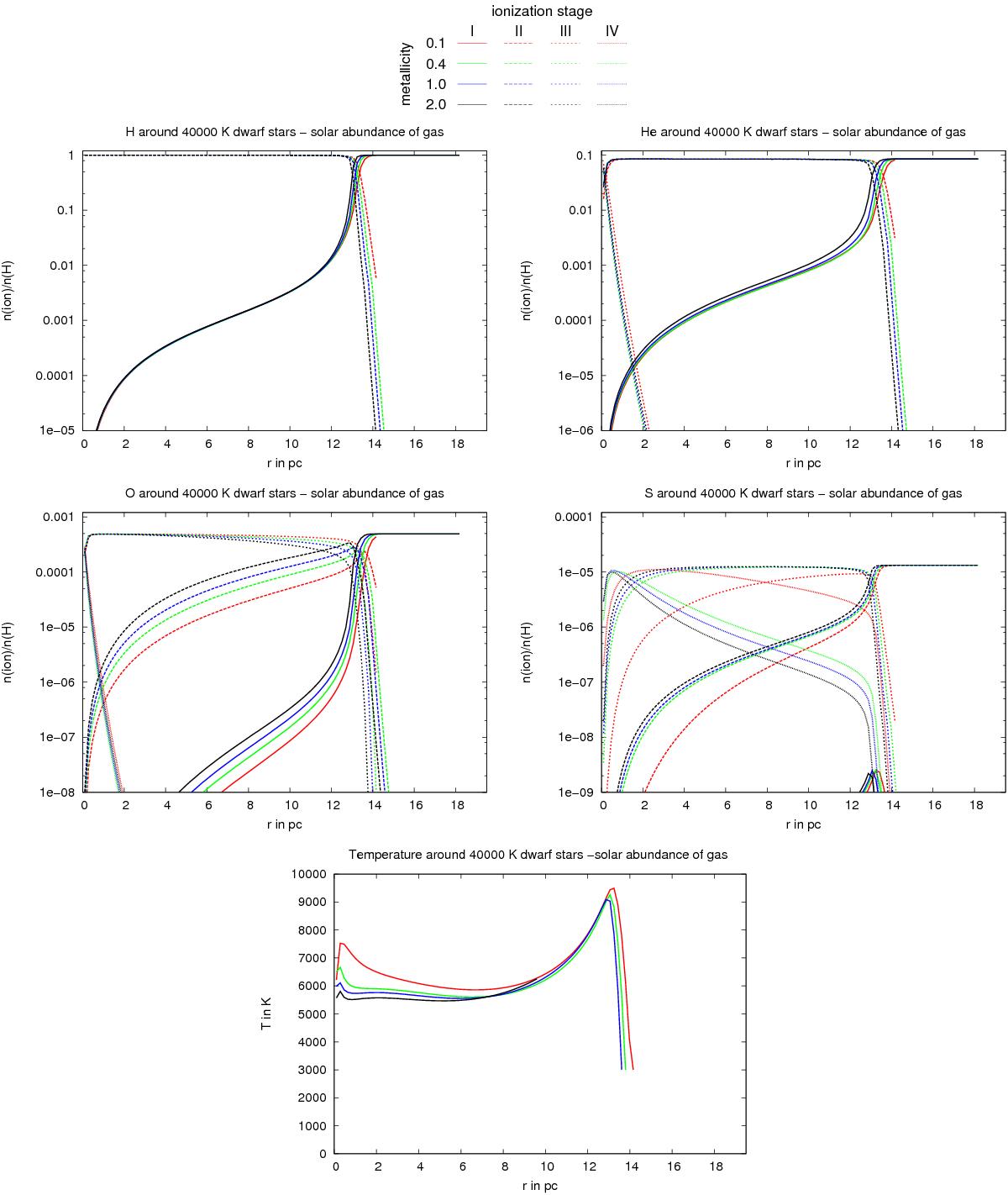Fig. A.10

Comparison of the ionization structures of H, He, O, and S, and the temperature structure of H ii regions for cases where the chemical composition of the gas is not the same as that of the irradiating star (for the gas a hydrogen particle density of 10 cm-3 and solar metallicity is assumed, whereas for the stars a 40 000 K dwarf model with metallicity from 0.1 Z⊙ to 2.0 Z⊙ is used). In this way the influence of the metallicity-dependent ionizing spectra on the physical behavior of the gas can be investigated independently of the influence of the metallicity of the gas. As the stellar spectra differ for different metallicities especially in the energy range above the ionization edge of He i, the differences obtained for the ionization structures of O and S are more pronounced than those of H and He. These differences lead to enhanced ionization fractions of O ii and S iii for the spectra of low-metallicity stars, because the spectra of these stars are “harder” than those of high-metallicity stars of the same effective temperature (see Figs. A.1–A.4). As a consequence of this behavior the temperature of the gas also increases, but this effect is smaller than in the case where the metallicity of the gas is the same as that of the star (Fig. A.9).
Current usage metrics show cumulative count of Article Views (full-text article views including HTML views, PDF and ePub downloads, according to the available data) and Abstracts Views on Vision4Press platform.
Data correspond to usage on the plateform after 2015. The current usage metrics is available 48-96 hours after online publication and is updated daily on week days.
Initial download of the metrics may take a while.


